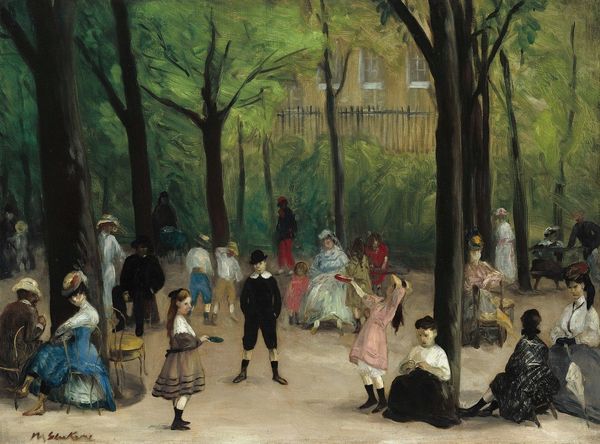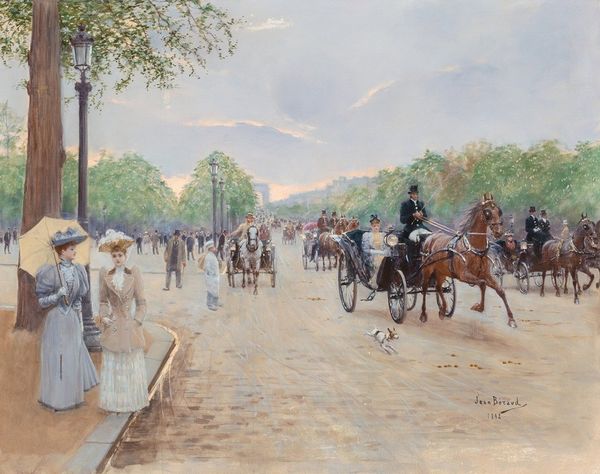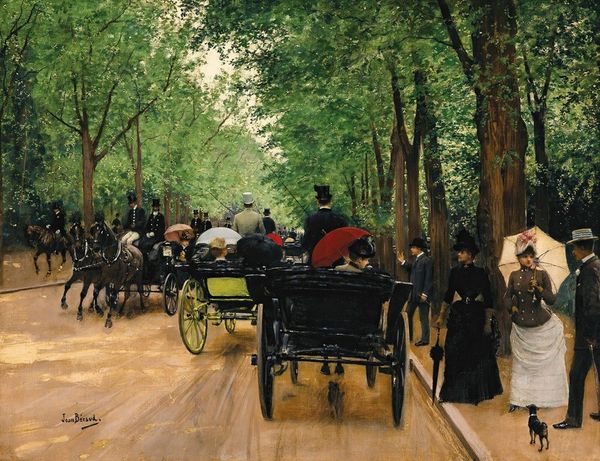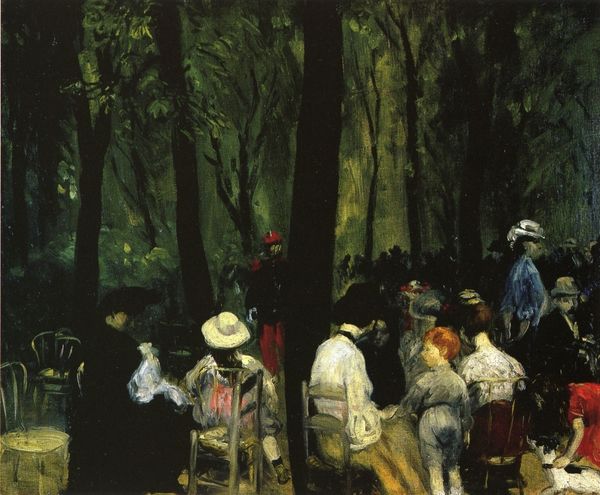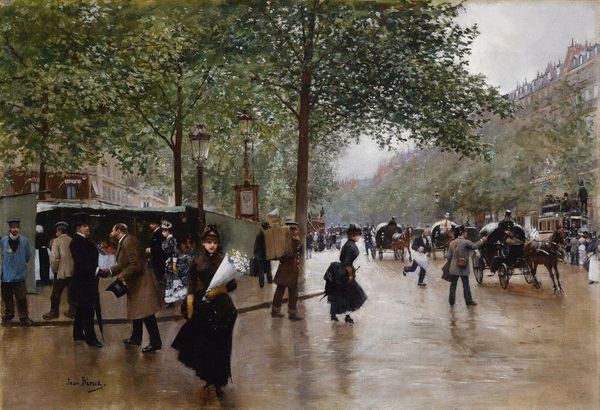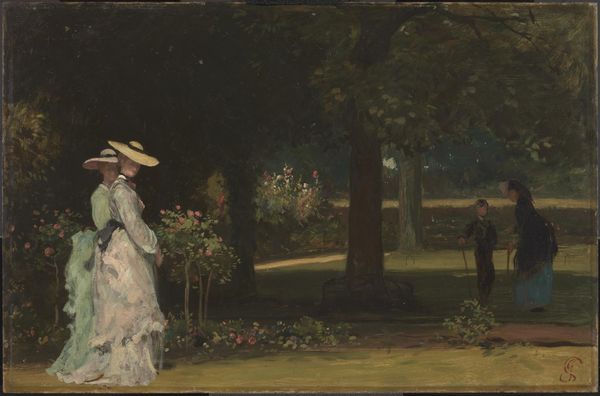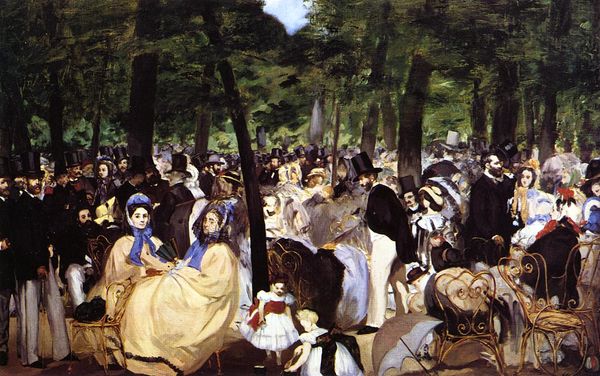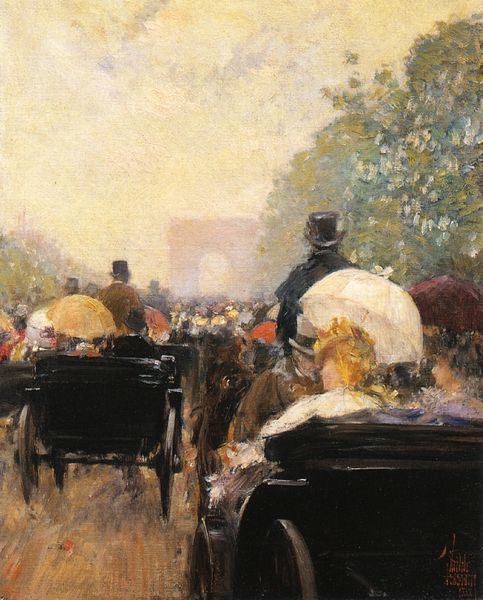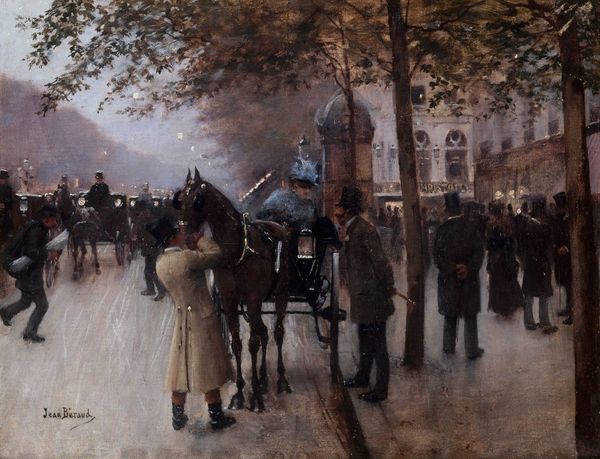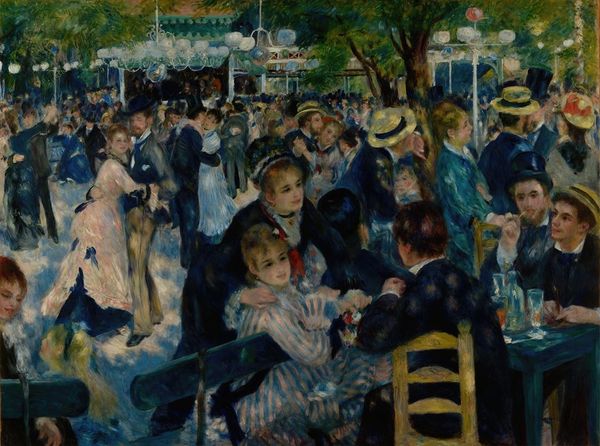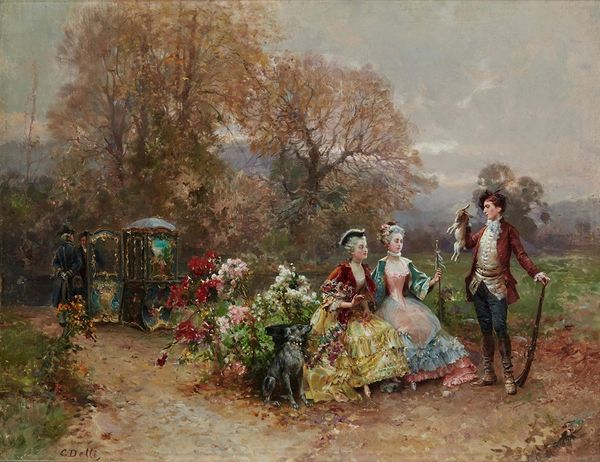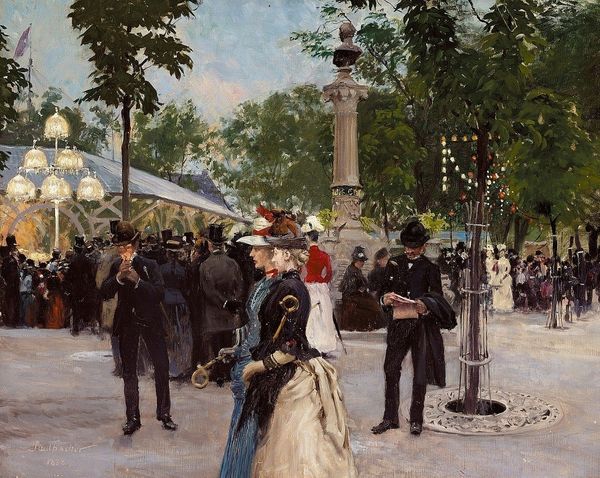
Copyright: Public Domain: Artvee
Editor: Here we have William Glackens’ “The Drive, Central Park,” painted around 1905, using oil paints. It’s got a hazy, dreamlike quality to it. All these well-dressed people, the carriages… it feels like a snapshot of a bygone era. How can we contextualize a scene like this today? Curator: Precisely. It’s tempting to see it as purely nostalgic, but Glackens, along with other Ashcan School artists, was interested in depicting modern life as it was lived. So, what do we see here? A slice of upper-middle-class leisure. Central Park, publicly owned, becomes a stage for displays of wealth and social status. Note how the figures are positioned and composed. It gives a sense of observing from the outside. Editor: So, it's not just a pretty picture; there's a critique embedded within the impressionistic brushstrokes? Are you suggesting it's almost a social commentary? Curator: I think it is. Glackens invites us to consider who has access to these spaces and how they’re used. Look at the composition. There is no dramatic focal point and this aesthetic choice renders the scene more ordinary. The lack of clear individual portraits also moves this away from classical paintings of that time. What do you notice about who is represented here? Editor: I see predominantly wealthy white people in carriages and nice clothing enjoying a stroll. Now that I’m looking at it that way, the people on benches are harder to make out; a bit obscured... Curator: And is that unintentional, do you think? The painting reveals social dynamics—power, class, and representation itself. It prompts us to think about who gets seen, and how. The politics of imagery is crucial. Editor: This has shifted my understanding; it's more layered and thoughtful than I initially thought. Now I see that it portrays a particular time and place and asks questions about societal structures. Curator: Absolutely, by examining the socio-political factors surrounding its creation, we can unveil the deeper significance within what might initially seem a purely aesthetic, or even superficial, scene.
Comments
No comments
Be the first to comment and join the conversation on the ultimate creative platform.

